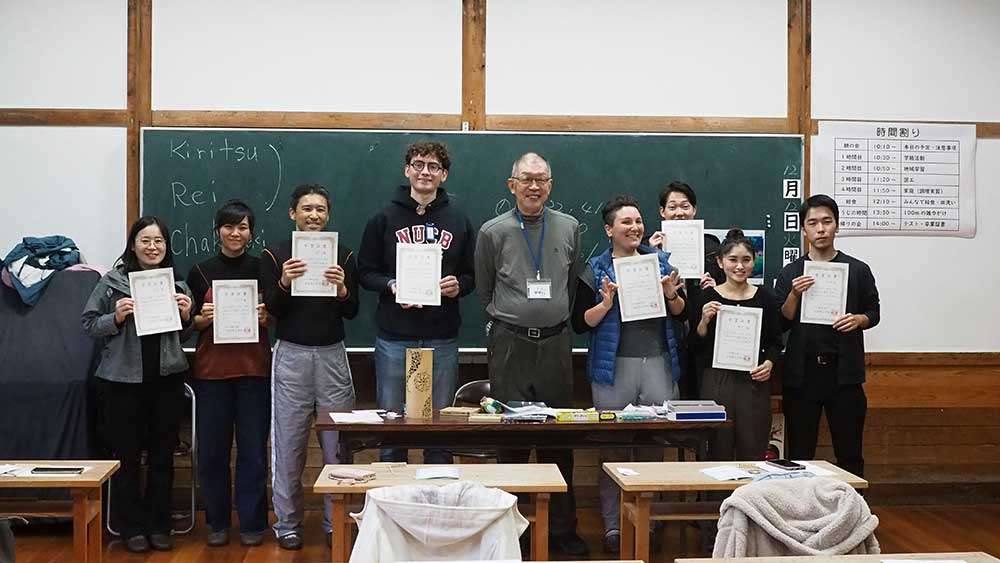On this day, I participated in a trial tour to Mitsue Village, Nara, to experience Japanese elementary school life. Mitsue Village is located on the eastern edge of Nara Prefecture, on the border with Mie Prefecture, and is a 30-40 minute drive from Nabari city in Mie.
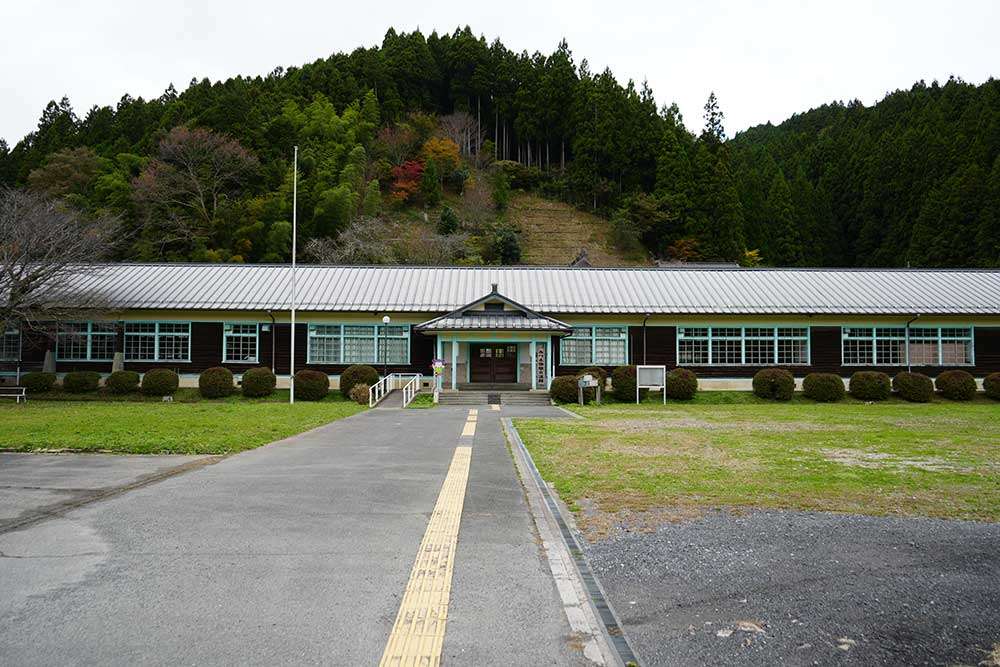
The experience program was held at the Mitsue Culture Community Hall, which used to be an elementary school. All the participants are working adults, but it is heartwarming even for a foreigner like me, who spent a totally different school life, to recall those happy school days.
Surrounded by rich nature, the wooden building is still beautifully maintained. When I entered the building, the hallway especially caught my attention, it was over 100 meters long.
Each participant entered the classroom individually, as classes would begin shortly.
1st period: Homeroom
When the school bell rang, a nice, tall old man came in. He was our homeroom teacher. And then the class started.
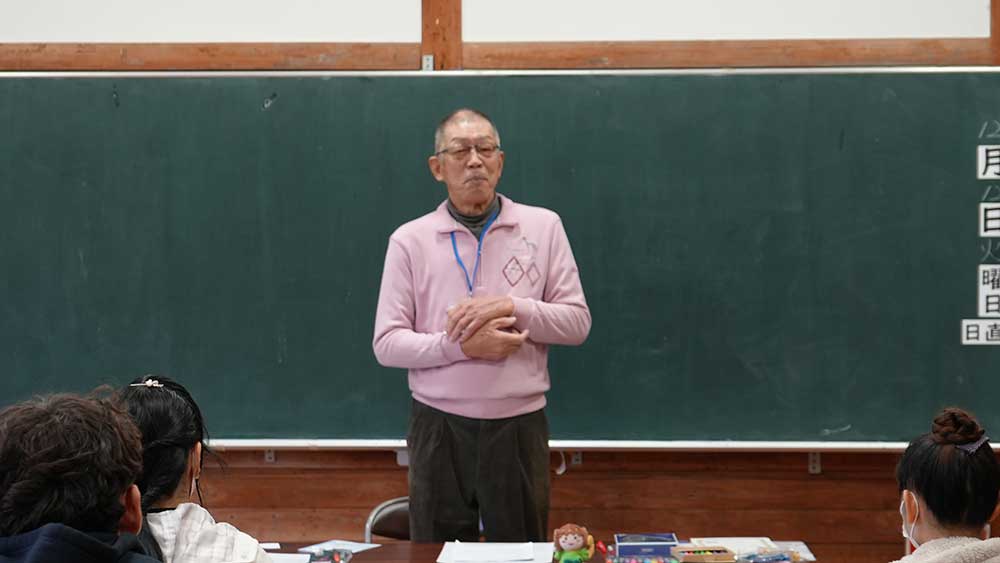
Japanese elementary school teachers are really busy. One person teaches various subjects such as Japanese, math, history, etc., and keeps moving all day. I really appreciate their hard work! I’ve made up my mind that we, the students, have to study hard too.
The class began by writing Kiritsu, Rei, and Chakuseki on the blackboard and reciting them. Kiritsu means stand up, rei means bow, and chakuseki means to be seated. Thanks to the teacher, after repeating the words several times, even foreigners who did not understand Japanese were able to remember the words completely.
Next, we practiced writing hiragana and katakana, two kinds of Japanese alphabet. With the teacher’s guidance, we wrote only the katakana that matched the pronunciation of our surnames. This is easy for Chinese people because Chinese surnames are short. For example, my surname is "付," which can only be pronounced “フ” or “フウ.” I finished writing right away. My teacher praised me and I was so happy!
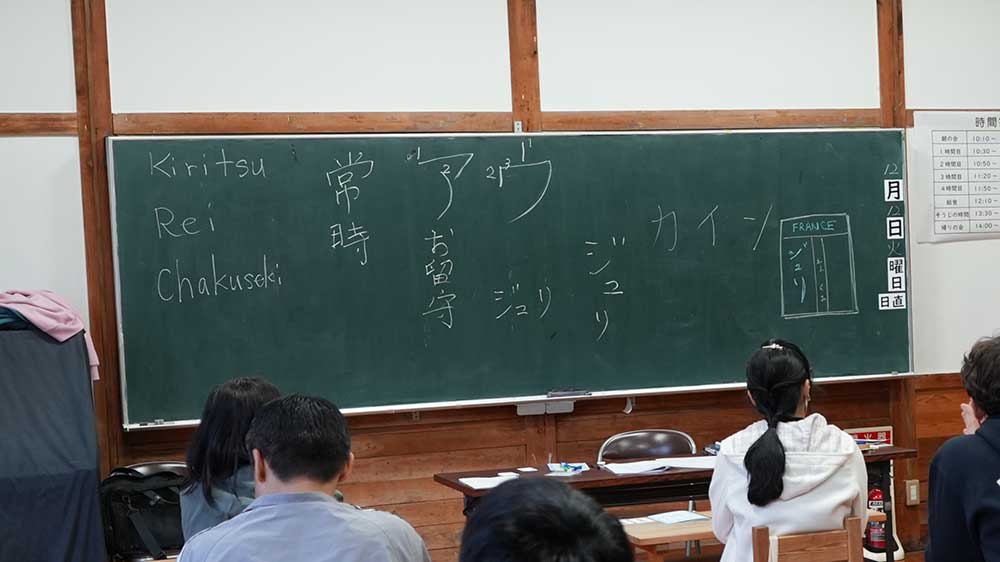

2nd period: Community Study
The second period is a community study. When the student who was on class duty said the “Rei” they learned during the first period, so we all bowed to the teacher.
In the community study, the students learned about the origin of the name of Mitsue Village.
I learned that a very interesting legend remains to this day. About 2,000 years ago, the princess Yamatohime-no-Mikoto, the daughter of the 11th Emperor Suinin, sought a place to enshrine the deity Amaterasu. As she traveled, she left her walking stick in this area as a marker of a potential site. There seemed to be many shrines and legends related to the princess in the village, which made me feel a sense of romance.
However, one question remains unanswered. Why was the village of Mitsue not ultimately chosen as the site for the shrine of Amaterasu, despite the fact that it was among the candidates? When I asked the teacher, the answer was not clear. It is probably because there was an even more suitable place than Mitsue, but just the fact that it was nominated makes the village attractive enough.
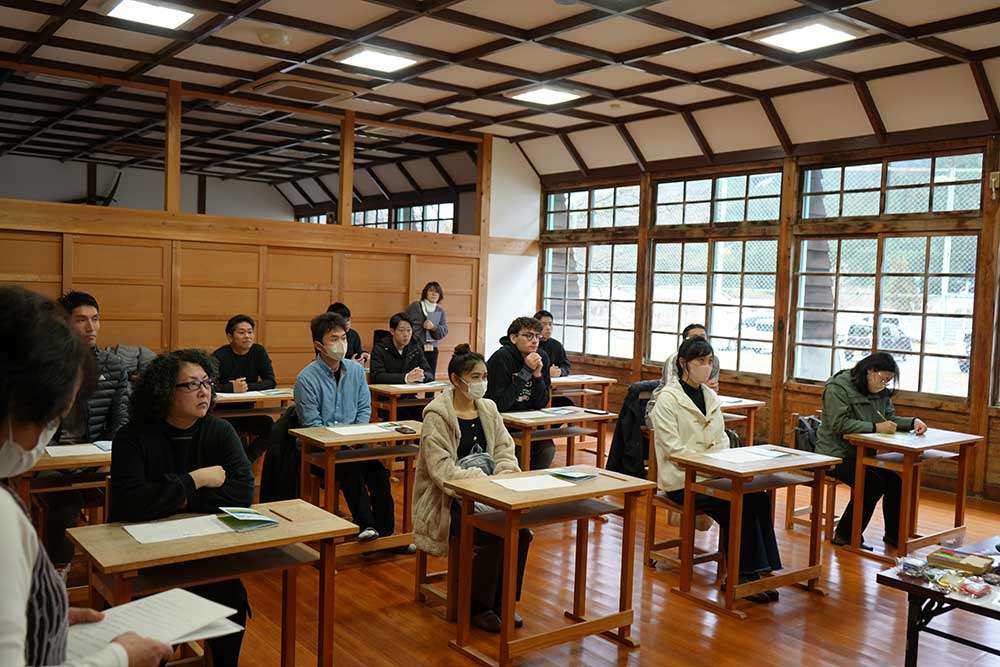
3rd period: Arts and Crafts
The third period is arts and crafts. The students worked on making taketombos or bamboo dragonflies. A taketombo is a traditional Japanese toy that you can let fly like a helicopter by spinning its shaft. A young male teacher showed us, step by step, how to make one and fly it, after following the lecture on the growth of bamboo trees.
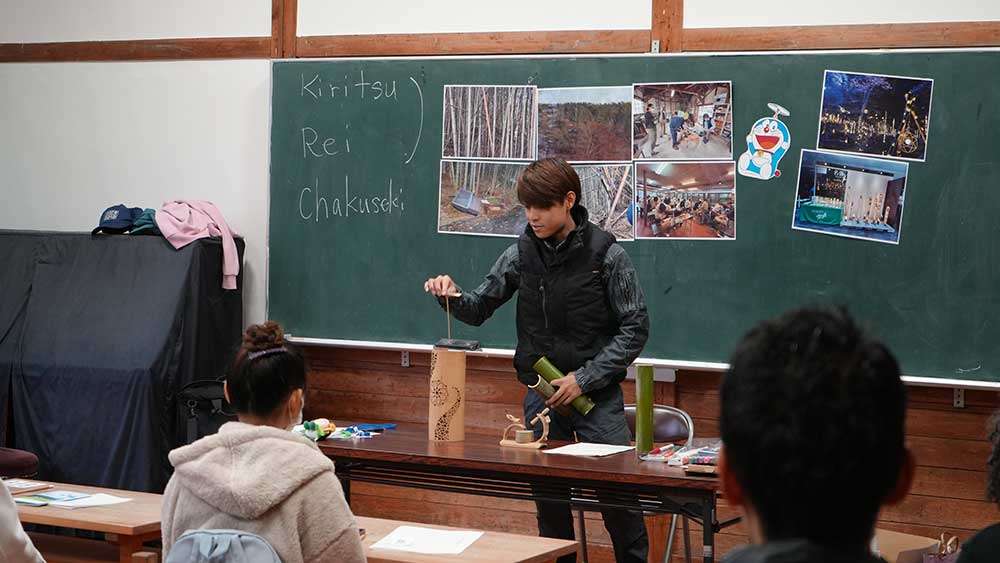
An excellent note-taker is always considered as a good student, right? Well, that was me! I was one of those good students (big smile).
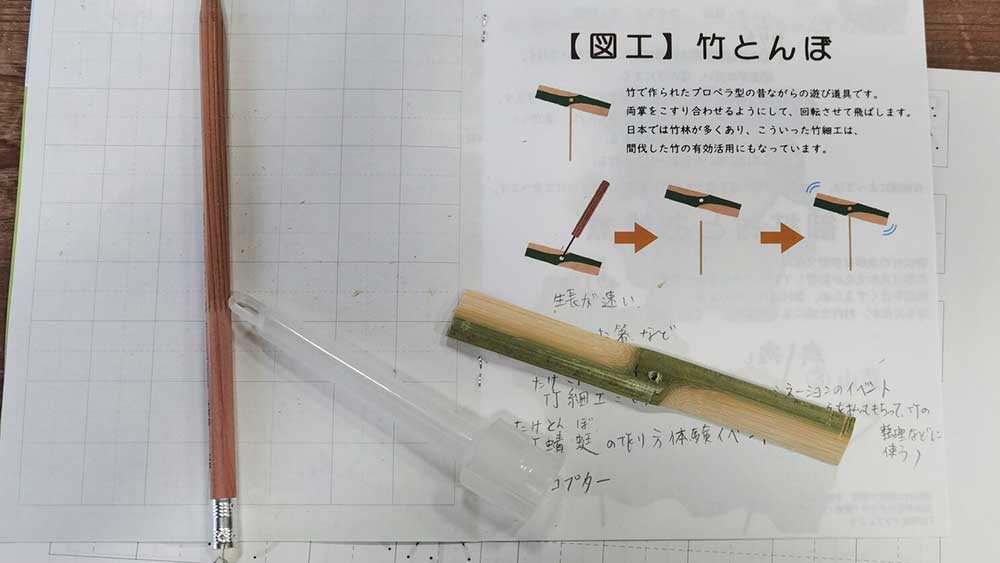
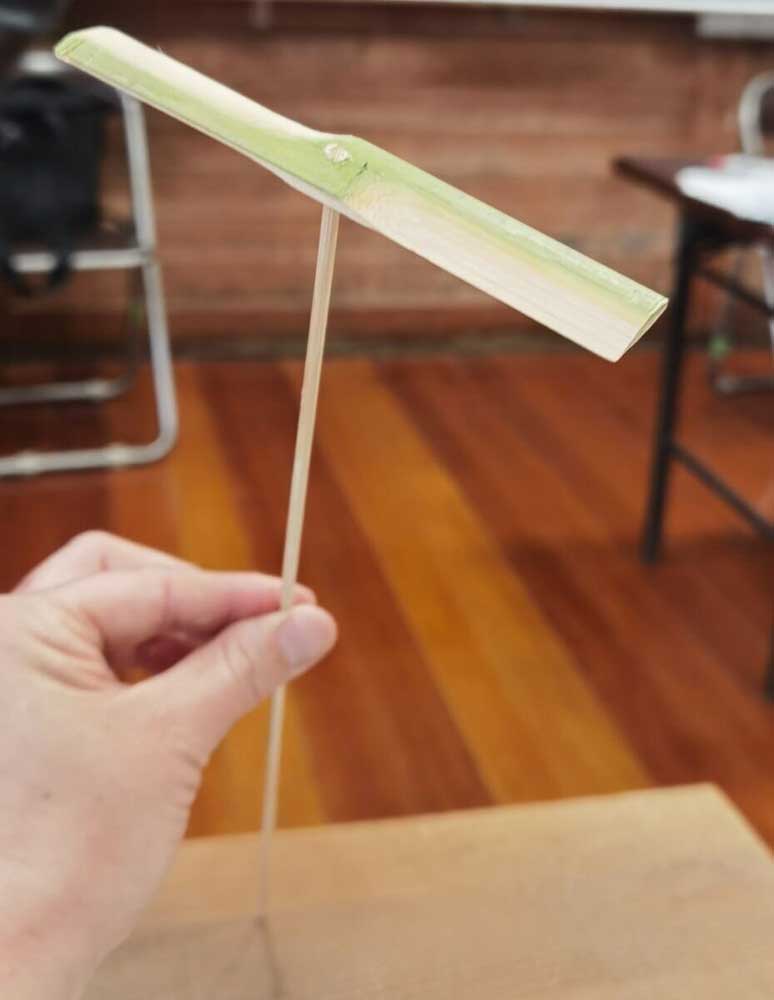
4th period: Cooking
The fourth period was a cooking class. We cooked lunch using a variety of local ingredients. The staff had the ingredients ready and started working even before we arrived. I was in charge of baking mochi or rice cakes. I felt accomplished being able to bake them so nicely.

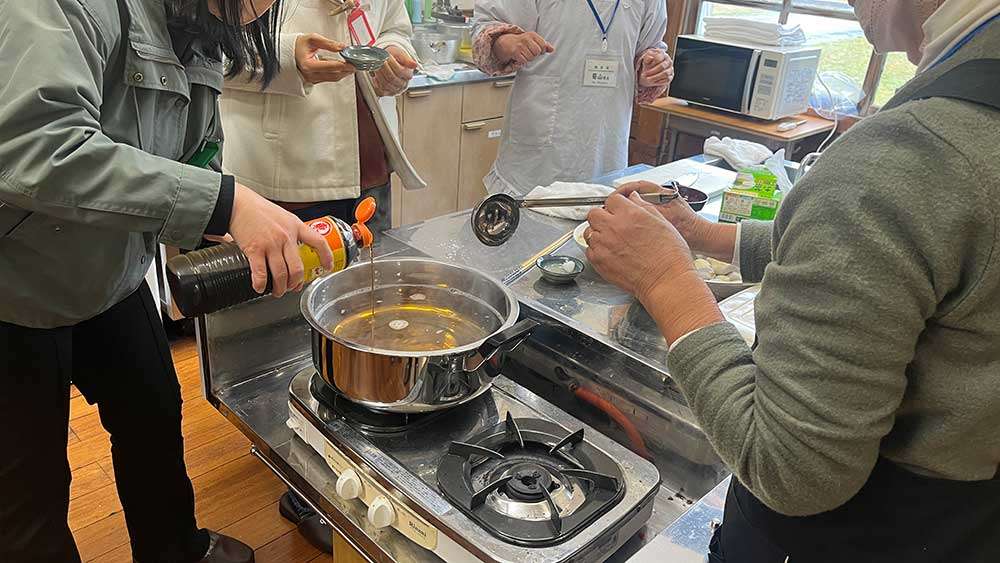
With everyone’s help, all the side dishes were ready! It was great fun dishing up rice into bowls and serving the food. The freshly prepared dishes were truly exceptional!
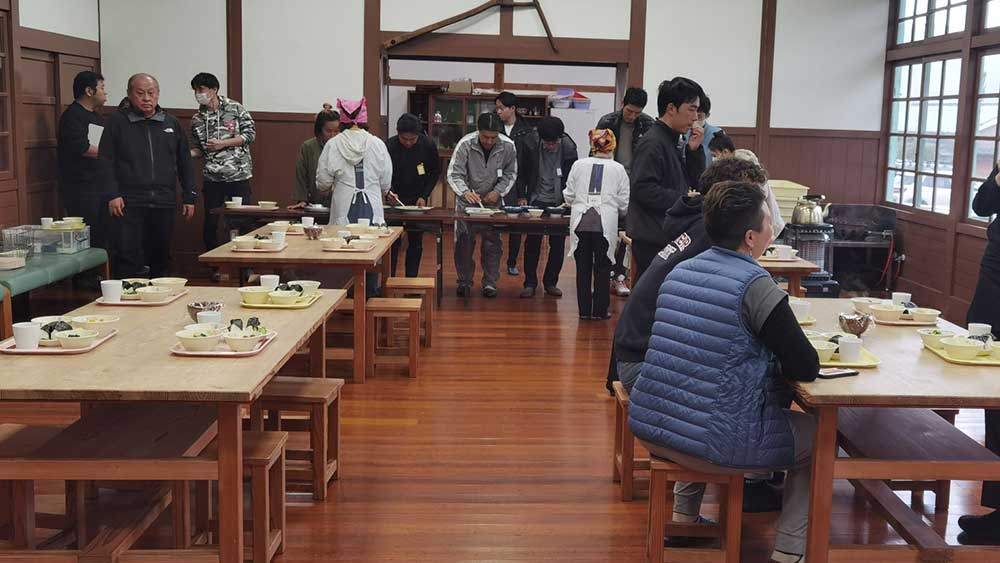
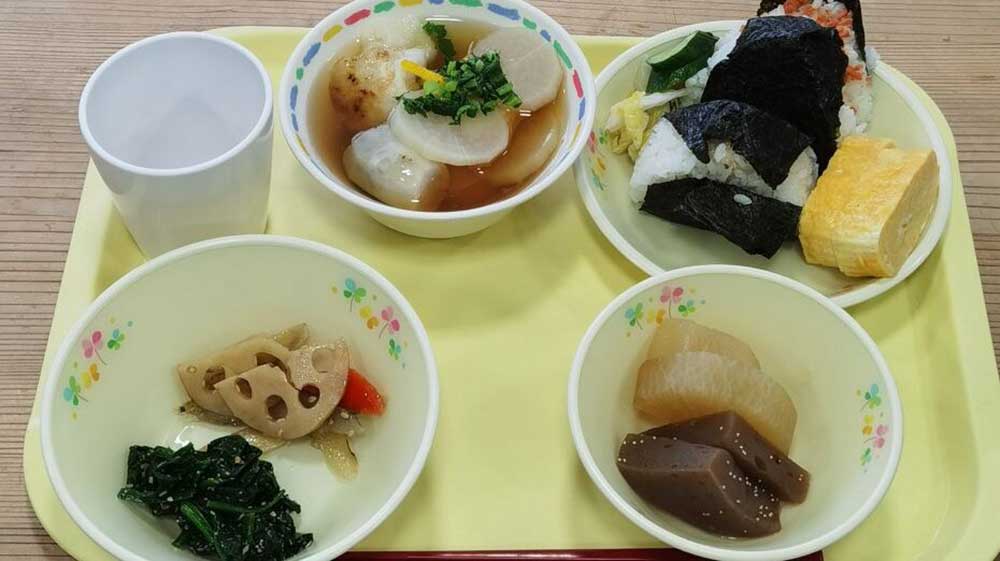
Cleaning Time
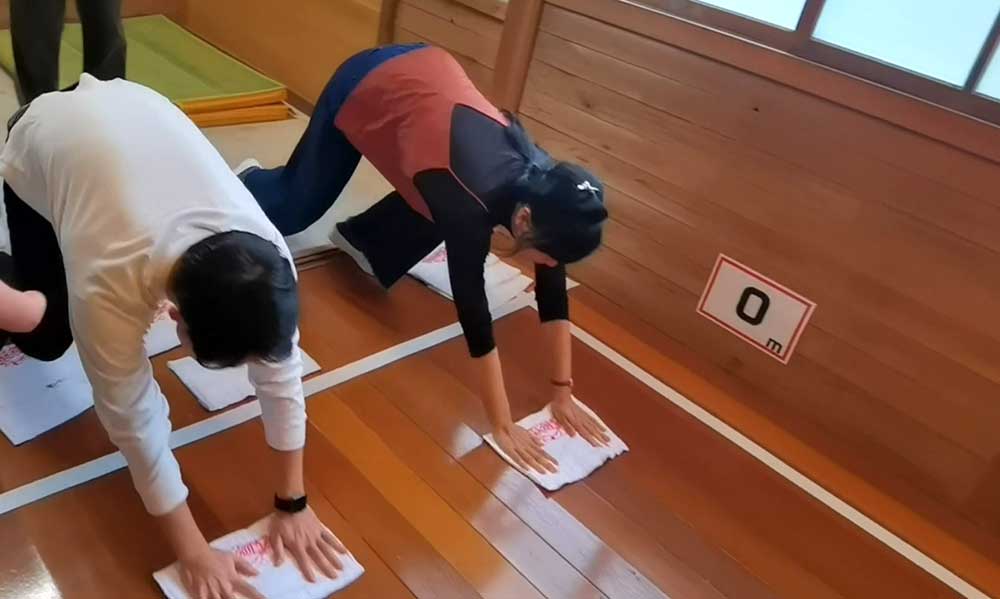
In the afternoon, it was time for cleaning, and we participated in a floor-wiping race in the 100-meter-long hallway. It wasn't as easy as it looked; after 10 meters, my legs and hands were already stiff and weak. But having everyone cheering me on, I could not give up so easily! I pushed the cloth all the way to the very end of the hallway. I was exhausted, but it was a very enjoyable time.
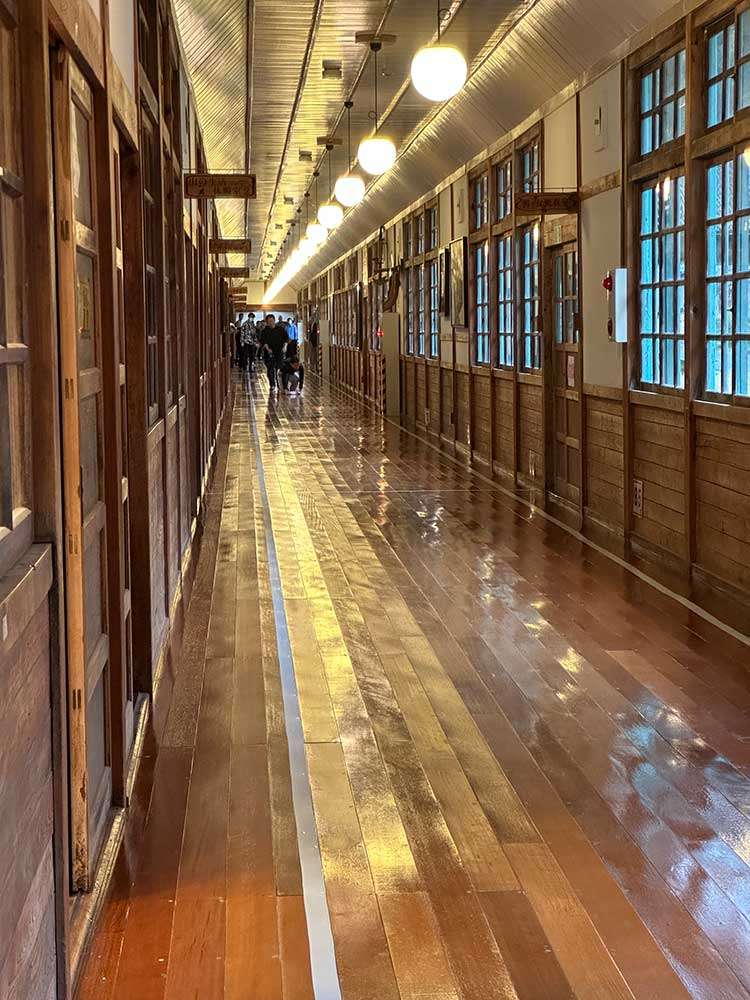
End-of-the-day Meeting
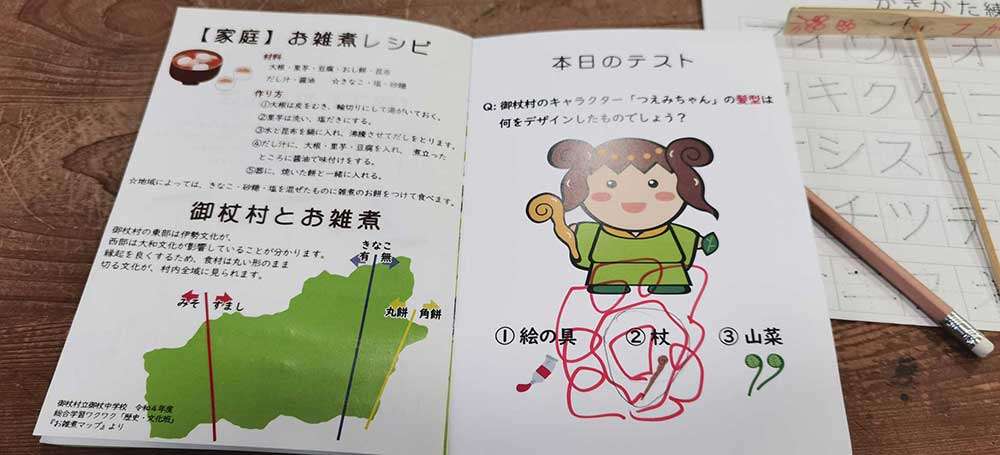
We took a quiz in the meeting before the school day ended.
The question was: What is the hairstyle of Tsuemi-chan, the village’s mascot character, based on?
It is difficult to answer if you don’t know the origin of the village’s name. But I had learned it well, so I was good to go. The teacher checked my answer, and I got it right. I received a hanamaru (flowery circle) mark, which means excellent work!
I am thrilled to have successfully graduated!
Thank you very much to the teachers for a productive day. I appreciate so much for all their hard work today.
Even if you’re an adult and no matter how old you are, the human desire for a simple and enjoyable life does not change. Nothing compares to the happiness of spending quality time with your family and friends in a relaxing place, escaping everyday life.
If I have a chance to visit Mitsue Village again, I would like to participate in hiking and festivals to experience more of their local culture next time. I’ll be back, Mitsue!
